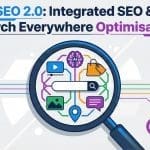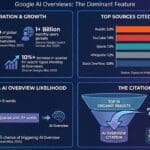Your social media strategy can be compared to cooking a great meal – if you want the best results, it takes time and some great ingredients and things can’t be rushed.
The below are part of your recipe for social media success in 2015 with some quality ingredients:
1) Preparation – a good meal always requires planning
Decide what your objectives are first of all. What type of ‘meal’ are you cooking up? Do you want brand exposure? Do you want to concentrate only attracting a certain type of user to your website and social media pages? These things need to be established before you continue as they will shape the whole process and help form your objectives.
2) The starter – micro video
Don’t be fooled – just because we have named this the ‘starter’ you shouldn’t underestimate the importance and potential of creating micro video. For the most part the two ‘flavours’ available are Instagram and Vine. Both are very similar but you can create different campaigns and even have different objectives for both networks.
As more businesses take to social media sites, it’s easy for us to ignore the generic, boring updates sent out so why be part of that trend? You can still use the same networks but not succumb to the same fate as some businesses that are ignored for the most part online.
An example of how you could use such sites would be to imagine a company that sells PC hardware and builds computers to specification, on some big jobs you could create short time-lapse style videos of your client’s machine being built which helps establish a more personal connection between you and your customers. That’s just one example of the many but it’s good to try to think outside the box and relax, keep it somewhat informal and ‘real’ as this can help your customers listen to you and make you stand out from the usual noise of social media spam and generic ‘thank you for your business’ messages.
3) The main course – be active where your audience is
As you are probably expecting, yes the predictable 3 – YouTube, Facebook and Twitter. The fact that you probably rolled your eyes at the predictability of these suggestions illustrates how saturated social media is with advice blogs and businesses on the networks promoting their product or service at the moment and into 2015. We have identified this being the case so what’s the solution? The solution would be to use the same networks but to operate on a different frequency – start to try to stand out from the competition by being quirky and getting creative.
I’ve mentioned this a few times in blogs and although this may seem repetitive I feel that it is integral to any success on social media in 2015. As mentioned in our viral videos blog, there are some fantastic ideas here that you can get inspiration from and using the Blendtec blenders as an example, without their unique approach to marketing the product, they would just be another company selling blenders.
You don’t necessarily have to be amazingly creative on all your networks but you really should have something unique that you can push with Facebook ads and promote via Twitter.
YouTube is a great way to make that possible with their service, especially now YouTube supports 60FPS video and 4K as options as well as YouTube moving entirely to HTML 5 making compatibility much improved on mobile devices.
Image credit – Vine






0 Comments